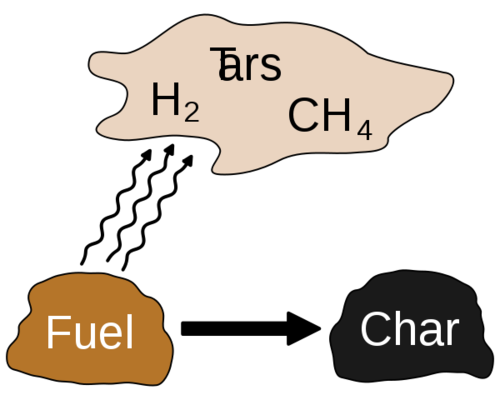Torrefaction
Jump to navigation
Jump to search
Basics
Torrefaction of biomass, e.g., wood or grain, is a mild form of pyrolysis at temperatures typically between 200 and 320 °C. The calorific value of biomass can be greatly increased by torrefaction. Benefits are: higher energy density, more homogeneous composition, hydrophobic behavior, elimination of biological activity, improved grindability.
Internal Links
- Bio-Tar
- Bio-Asphalt
- Wood Preservation by Carbonization
- Pelletized biomass and Wood Chips
- Kon-Tiki Kiln and Biochar
